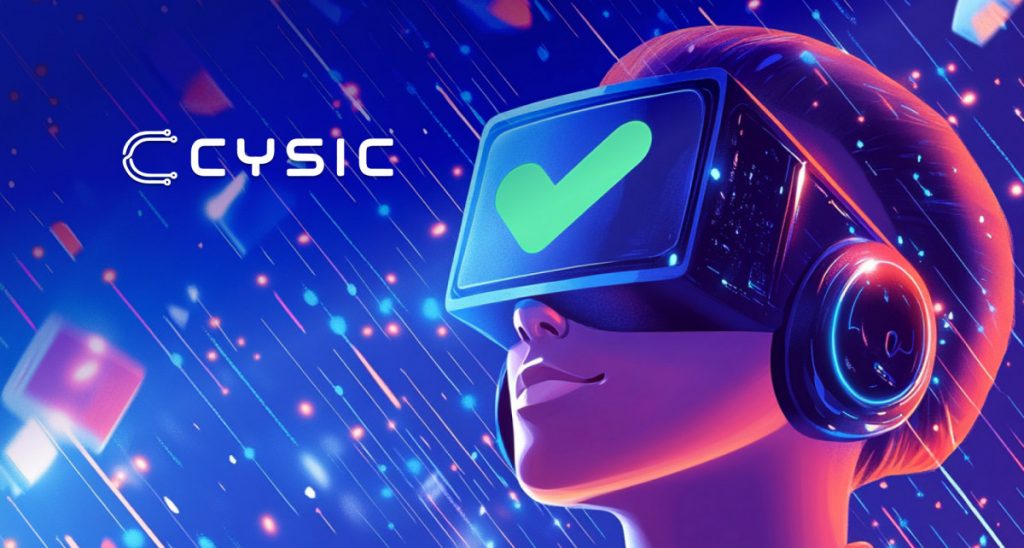Cysic Launches Game-Changing Mobile App for Zero-Knowledge Proofs


In Brief
Cysic has launched an Android-based verifier application to streamline zero-knowledge proof verification, aiming to increase participation in the ZK ecosystem and maintain efficiency and accessibility.

Cysic has introduced an Android-based verifier application to simplify the verification of zero-knowledge proofs, which is an important development in the crypto sector. Cysic hopes that by making this procedure available on mobile devices, it will encourage more people to participate in the ZK ecosystem while also keeping verification efficient and accessible.
The Impact of Zero-Knowledge Proofs on Blockchain
Zero-knowledge proofs have become a critical component of privacy-preserving blockchain applications. This cryptographic approach enables one party to demonstrate the authenticity of a statement to another without disclosing any further information. The method keeps sensitive data hidden while yet allowing for verification, making it especially useful for financial applications, identity verification, and safe transactions.
Zero-knowledge proofs, first offered as a theoretical notion in the 1980s, have grown more practical in recent years. Many blockchain networks use them to improve transaction efficiency and anonymity. Ethereum’s Layer 2 scaling solutions, for example, use ZK proofs to validate transactions while minimizing congestion on the main blockchain. Despite these benefits, acceptance of ZK technology has been hampered by the difficulty of verification and the hardware needs associated with traditional proof validation methods.
Cysic’s Approach to Mobile-based Verification
The release of Cysic’s verifier application overcomes some of the most critical adoption hurdles by allowing users to validate ZK proofs straight from their Android devices. This mobile-based solution reduces the need for specific gadgets and technical skills, making verification available to a larger range of users.
The program has an easy-to-use interface, allowing users to swiftly verify proof. The method consists of downloading the program, inputting wallet information, and hitting a button to begin verification.
Beyond its simplicity, the software is designed for speed and efficiency. Verification times average 62.4 milliseconds, accounting for only 2% of the overall time needed to perform a verification activity. This degree of performance means that users may participate in proof validation with minimal latency. The application is also resource-efficient, using just 200 MB of memory for each verification operation.
Incentive Structure for Users
Cysic’s verifier program does more than just ease verification; it also provides an incentive participation framework. Users may earn rewards by using the software in the background and sending their verification findings to the Cysic Network.
The passive aspect of this earning approach makes it tempting. Users may join with minimum effort since the program requires no active interaction beyond the first setup. This concept is consistent with wider developments in the crypto market, as decentralized networks increasingly rely on dispersed participation to ensure security and efficiency.
The Rising Importance of Accessible ZK Technology
The emergence of a mobile verifier is crucial, especially as privacy-focused blockchain applications gain popularity. Decentralized finance (DeFi), digital identification systems, and other Web3 applications are increasingly reliant on ZK technology to safeguard user data and improve transaction efficiency. Despite these advantages, widespread adoption has been hampered by the assumption that cryptographic verification is excessively complicated or resource-intensive for average users.
Beyond individual users, an increase in active verifiers might help the whole blockchain ecosystem. Increased involvement improves the security and decentralization of ZK networks, guaranteeing that verification is resilient and scalable. Cysic’s verifier helps to build a more resilient cryptographic infrastructure by enabling a wider variety of parties to interact with ZK technology.
The Impact of Web2 and Web3 Integration
The growing popularity of blockchain applications in mainstream digital spaces emphasizes the need for solutions that bridge the gap between Web2 and Web3 users. Recent developments, like as the rise in popularity of apps like Moonshot following the debut of Trump’s memecoin, show that new audiences are becoming involved with crypto-related technology. Many of these users have little to no prior experience with blockchain systems, but they are drawn to platforms that provide concrete benefits and incentives.
To keep these new users beyond short-term trends, crypto apps must offer genuine engagement options that go beyond speculative investments. Cysic’s verifier application provides a practical use case in which users may contribute to a privacy-focused ecosystem while receiving benefits.
Cysic provides an easy entry point to ZK verification, acting as a doorway for people who may not have previously explored cryptographic validation. The ability to interact with blockchain technology without requiring substantial technical expertise or costly hardware spending facilitates Web2 users’ transition to Web3 settings.
Future of Mobile-Based Cryptographic Verification
The release of Cysic’s verifier app represents a larger move toward mobile-friendly cryptographic tools. With the growth of blockchain adoption, the demand for efficient and user-friendly verification solutions is projected to rise. Mobile-based techniques provide a scalable alternative to increase participation, especially in areas where desktop-based verification may be impractical owing to hardware restrictions or accessibility issues.
Future advancements in mobile cryptographic verification may include extended support for new ZK proof types, interaction with decentralized apps, and improved verifier incentive mechanisms. As blockchain networks evolve, the success of mobile-based solutions like Cysic’s verifier could encourage additional improvements in this market.
Disclaimer
In line with the Trust Project guidelines, please note that the information provided on this page is not intended to be and should not be interpreted as legal, tax, investment, financial, or any other form of advice. It is important to only invest what you can afford to lose and to seek independent financial advice if you have any doubts. For further information, we suggest referring to the terms and conditions as well as the help and support pages provided by the issuer or advertiser. MetaversePost is committed to accurate, unbiased reporting, but market conditions are subject to change without notice.
About The Author
Victoria is a writer on a variety of technology topics including Web3.0, AI and cryptocurrencies. Her extensive experience allows her to write insightful articles for the wider audience.
More articles

Victoria is a writer on a variety of technology topics including Web3.0, AI and cryptocurrencies. Her extensive experience allows her to write insightful articles for the wider audience.

















































